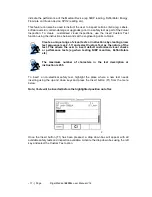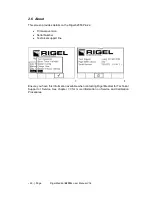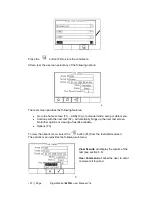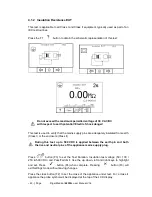
-
28 -
|
Page Rigel Medical
62353+
user Manual V1.4
3.1 Asset ID
Each test record is stored using the Asset ID number (25 character max) and date /
time of test. Multiple entries can be applied using the same Asset ID number. In this
case, the memory will hold all entries and differentiate using the test date.
The Asset ID field is used to store (and identify) the record in the Rigel
62353 Plus database. Additional input fields, referred to as ASSET
TRACE VARIABLES are available to distinguish between identical Asset
ID records, ie when the ASSET ID field is used to enter the Model or 4
digit fast code. The benefit of using the Rigel 62353 Plus in this way is
that similar items can be easily retested using the same parameters.
When an existing ASSET ID is entered in the 62353 Plus, the tester will automatically
configure itself to re-perform the test without any additional settings being required. By
using ASSET TRACE VARIABLES, each ASSET can be given a unique identifier in the
database ie through the use of a serial number. A representation is provided below;
Asset Trace Variables
A
s
s
et
ID
(da
tab
as
e
rec
ord)
S
erv
ic
e
c
od
e
S
it
e
Lo
c
ati
on
Ma
k
e
Mo
de
l
Des
c
ri
pti
on
S
eri
al
Numb
er
Cl
ien
t
001
PPM
Site 1
Loc 1
JBM
X3000
ECG
1234er
NHS
001
PPM
Site 1
Loc 1
JBM
X3000
ECG
5678ty
NHS
001
PPM
Site 1
Loc 1
JBM
X3000
ECG
0986gh
NHS
Identical ASSET RECORDS are also differentiated by TIME/DATE stamp, thus
ensuring no records are overwritten.
3.2 Run Mode
For certain Medical Devices, it is important that measurements are taken when the
Equipment Under Test (EUT) is fully operational.
The Rigel 62353 Plus has a unique Semi Automatic Mode that allows
manual control of power-up and power-down of the EUT as well as
controlling the test sequence. This ensures that correct measurements
are performed and provide sufficient time to power-down any device
which is sensitive to power-breaks e.g. Ultrasound Equipment and PC
based ME Equipment.
Below is a graph highlighting the Grouping of Single Fault Conditions (
booox
) and the
delays which are manually controlled by the User (t
a
, t
b
, t
c
& t
d
) and the time in which the
safety analyser performs the automatic test routines.
















































